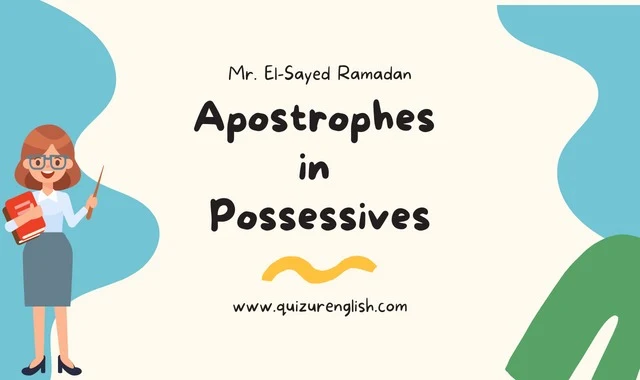Apostrophes in Possessives
In this workshop, you will focus on the following objective:
Grammar:
Grammar:
- Understanding how to use apostrophes in possessives.
Apostrophes in Possessives
Vocabulary Terms
A possessive noun shows possession, ownership, or a relationship between two nouns that is similar to that of ownership.
Literature Connection
In the following quotation, the possessive case of the singular noun mankind is mankind’s.
“He had a working analysis of mankind’s troubles: marriage, money and the tangles of human ties.”
—R. K. Narayan, from “An Astrologer’s Day”
An important use of the apostrophe is to form the possessive of nouns and indefinite pronouns. The possessive case is formed by adding either an apostrophe or an apostrophe and s.
Examples
The noise of the bus agitated the semi-darkness of the park.
- To form the possessive of a singular noun that ends in s, add an apostrophe and s.
The bus’s noise agitated the semi-darkness of the park.
The astrologer answered the questions of the clients. - To form the possessive of a plural noun that ends in s, add only an apostrophe.
The astrologer answered the clients’ questions.
The paraphernalia of his bag was with the astrologer. - To form the possessive of a plural noun that does not end in s, add an apostrophe and s.
The bag’s paraphernalia was with the astrologer.
The astrologer answered the questions of everybody. - To form the possessive of an indefinite pronoun (such as somebody), add an apostrophe and s.
The astrologer answered everybody’s questions.
Apostrophes in Possessives Quiz
Choose the correct possessive form.
Tags
Grammar Workshops

